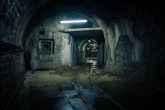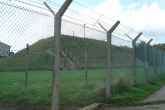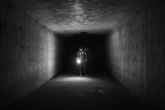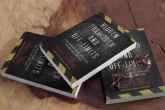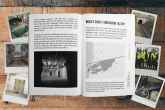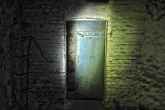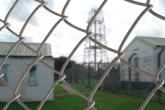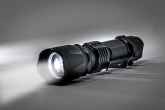Corsham: Where The War Was Stored
This article is more than two years old.
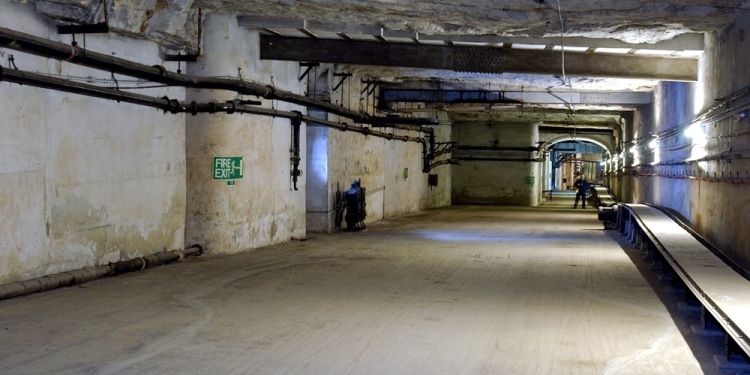
Photo: © Crown Copyright
Corsham, traditional English village complete with pleasant lanes, country pubs, and picturesque cottages. A sleepy Wiltshire hamlet. Who could suspect that lurking beneath these cobbled streets lies one of Britain's most mysterious wartime locations, which had the potential to have been the world's largest non-nuclear explosion?
After the end of the First World War, the British government knew that there was another war coming due to the continuing instability in Europe. Advisors to Winston Churchill had two different projections as to how the coming conflict would unfold. One school of thought was that the trench warfare seen in the First World War would return with huge land battles being fought across Europe. The second prediction was that it would be a war fought in the air and that waves of enemy aircraft would fill the British skies.
Nick McCamley said, "aerial warfare really was a novel thing. No one really knew what aerial warfare would be like. And the set of aerial bombardment was very much exaggerated."
"All around the world, all of the developed countries who were beginning to develop their air force," Nick continued, "they all exaggerated, not so much the power of their own air force, but the power of the enemies. Baldwin in 1928, when he said, "the bomber will always get through," he was voicing really what everyone thought. All around the world that there was really no defence against aerial bombardment. It was thought that bombers would be precise and accurate and they could pinpoint from 500 miles away, they could fly precisely and bomb an individual factory and individual army depot or whatever, but of course that was absolutely absurd."
Nick added, "the RAF were lucky, they could bomb within sort of 20 miles of their target. And it was said sometimes they were going sorties to bomb Germany and they finally bombed the wrong country. Not just the wrong sort of depot with the wrong city, but the wrong country. It was so inaccurate."
One Corsham resident remembers, "I think at the time when London was getting more of a pasting than we were, we didn't have an air raid. We didn't have a bomb drop within about five or 6 miles of Corsham, as far as I'm aware."
The British government began the mass production of ammunition for the coming fighting several years in advance, with numerous factories across the country creating tons of shells, bullets and explosives every day, creating one of the largest stockpiles of ammunition this country has ever seen.
The fear of losing these stockpiles due to an attack from the air led the Ministry of Defence to look for storage spaces that could shield the thousands of tons of weaponry from destruction.
If Britain was to lose our ammunition reserves, it could have been devastating for the country in the predicted land campaign across Europe, the armed force is desperately needed somewhere safe to hide the country's vital piles of ammunition and senior figures believed the only place safe enough was underground.
Nick McCamley said, "once a decision had been made to store the ammunition underground, then the economists looked at the cost of it and pretty soon it became obvious that it was going to be horrendously expensive, possibly prohibitively expensive, certainly to dig new underground tunnels to produce new underground space in Virgin ground."
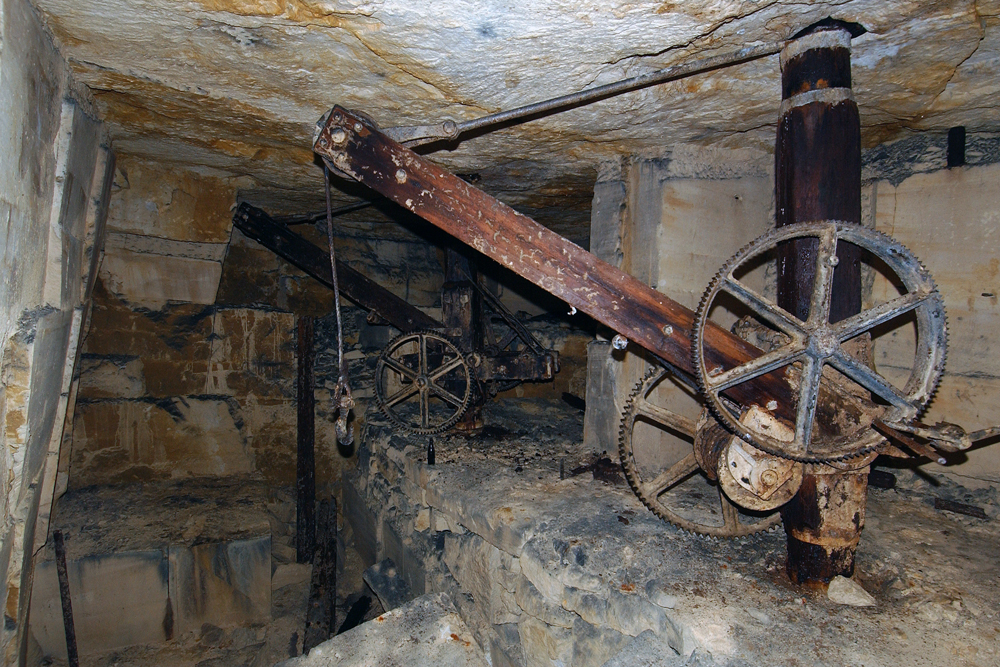
Photo: © Crown Copyright
One of the quarries that the Bath & Portland Stone Company was so desperate to get rid of was near and under the village of Corsham, near Bath in Wiltshire. Tunnel Quarry had been mined since the early 1800s and all the usable stone removed.
Nick said, "Tunnel Quarry is 45 acres gross storage space. So you've got an area of around about 100 acres altogether, which is the quarry is as long as box tunnels is a mile and a half long."
The Royal Engineers, under the supervision of the War Department, spent years converting Tunnel Quarry into a huge underground complex with ten storage districts, each intended to store different types of ammunition. The system operated like any other warehouse, with orders coming in and the goods being sorted, put together and moved to the surface.
Nick explained, "the idea was Tunnel Quarry as an isolated depot would store, I think it was around about 150,000 tons of ammunition. So the three main depots of Central Ammunition Depot, Corsham, which is Tunnel Quarry, Eastlays and Monkton Farley, would each store around about 150,000 tons. The concept was that they were reserve depots and the ammunition that was stored in them would only be used if there was an exceptional demand."
Advertisement ‐ Content Continues Below.

Nick continued, "what the war office wanted to do was balance the production of ammunition and consumption of ammunition. So it was hoped that the daily production of the factories would be just enough for the army to consume in their battles in North Africa or in Europe or wherever, but if there's an exceptional demand, or if there was an excess of supply, then the depots, like Tunnel Quarry, would act as a buffer depot in effect."
The advantage of having a main line railway connection directly into the Depot meant that trainloads of ammunition could drive straight into the complex and arrive at the heart of the quarry at one of the two platforms constructed underground by the Royal Engineers.
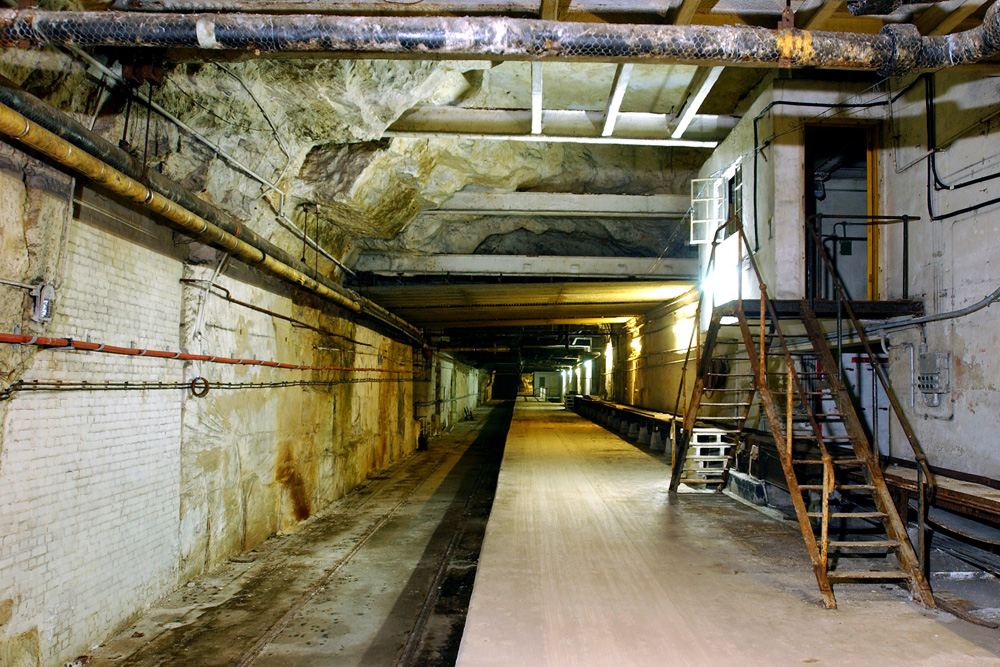
Photo: © Crown Copyright
The ammunition could be loaded and unloaded quickly and easily, being efficiently dispatched to its relevant storage district by a complex network of conveyors. The railway system inside Tunnel Quarry had all the workings of a standard railway line, apart from the fact that they were 100ft underground and carved out of solid stone.
The enormous facility even had an engine shed underground, where running repairs could be carried out upon the Hunslet locomotives that were housed there during the war and hold the ammunition trains from Thingley Junction.
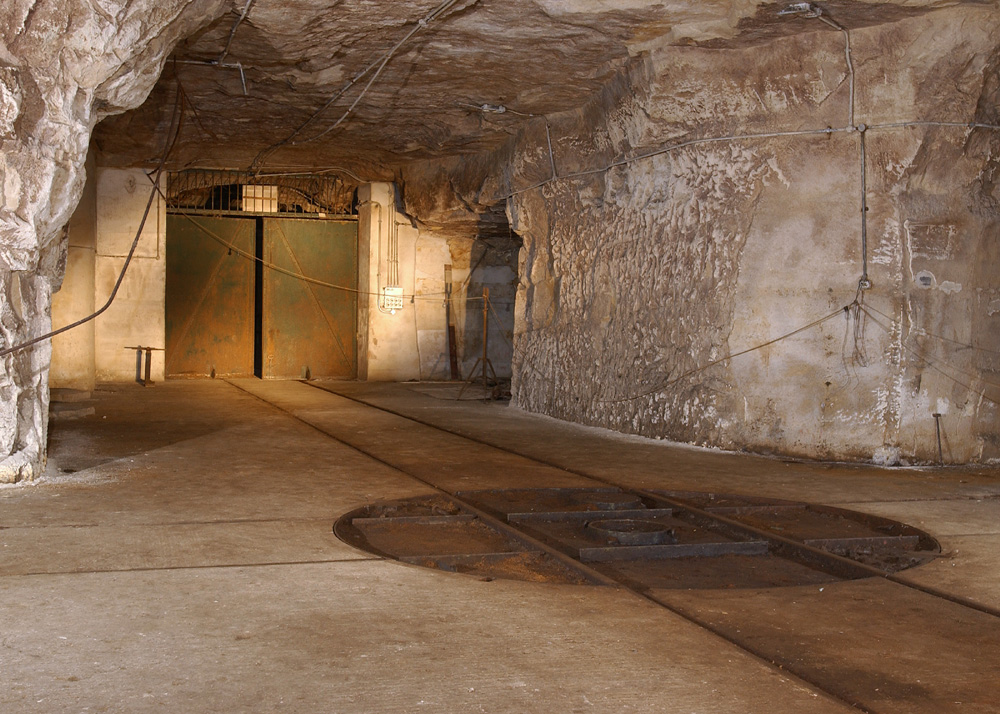
Photo: © Crown Copyright
The main function of the underground facility was essentially a well organised warehouse for the armed forces ammunition, capable of shielding its contents from bombing raids. It was capable of operating as a self sufficient facility.
The large steel blast doors fitted to the engine shed shielded the engines from any potential blast elsewhere in the complex. The reloaded trains would then have been taken back to the junction for distribution via the national real network.
To maintain protection from attack, the depot was made electrically self-sufficient by the addition of two Ruston diesel engine generators brought down from Lincoln and each weighing 60 tons. The hulking machines, like much of the infrastructure at Tunnel Quarry was simply left after the war with thoughts that facility may be reused at some point. They still lie in the darkness slowly rusting away. Much of Tunnel quarry now sits in a state of dereliction.
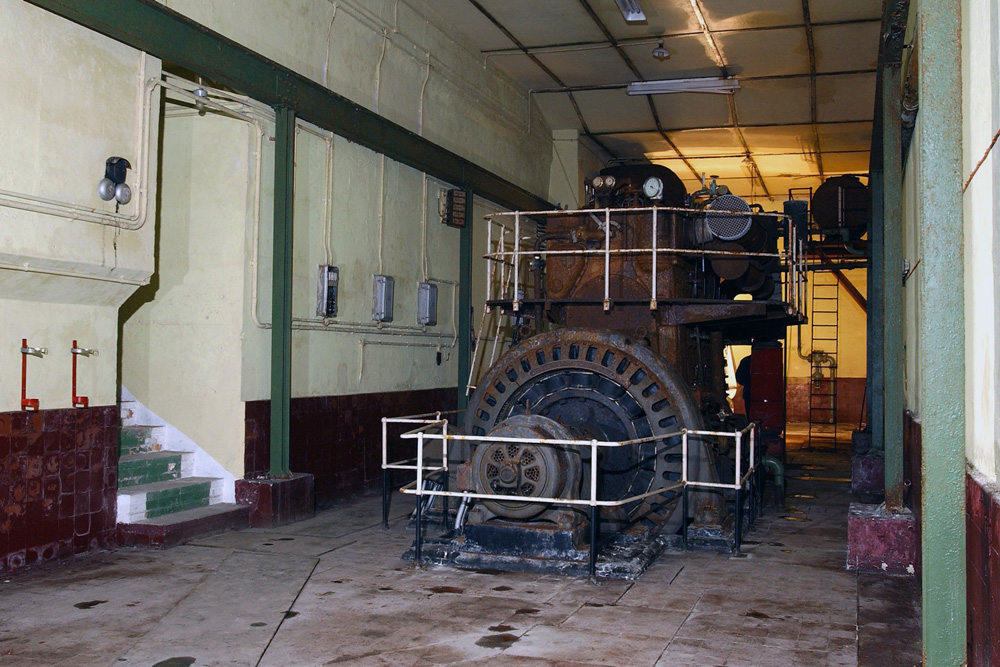
Photo: © Crown Copyright
The Hudswell Drift haulage way ran the length of Tunnel Quarry along the Northern edge. A continuous overhead cable haulage system pulled the loaded trucks from the ends of the districts directly into Hudswell lifts giving access to the surface.
All that now remains of these lifts above ground are two enormous concrete slabs sticking out of the Earth, with no clue as to what lies 100ft beneath them. The lifts were lowered to the bottom of the shaft and the cable simply cut and left a crash to the bottom, where they lie abandoned amidst debris from long past wartime operations.
Nick McCamley said, "the War Office took into account the fact that because you can't really disguise a railway line, railway lines were always prime targets for the German air force. So wars had to take into account the fact that the railway lines could be disrupted at any time. It's too easy to bomb a railway junction and then the entire railway system locally is put out of action. So they built features into the ammunition depots, which enabled them to handle exactly the same amount of ammunition daily by road that they could handle by rail. So although it was intended that everything would come in by rail, there were facilities to handle that 2,000 tons a day. You've got the underground railway station, but you've also got a series of slope shafts on the surface connected to lorry loading platforms on the surface."
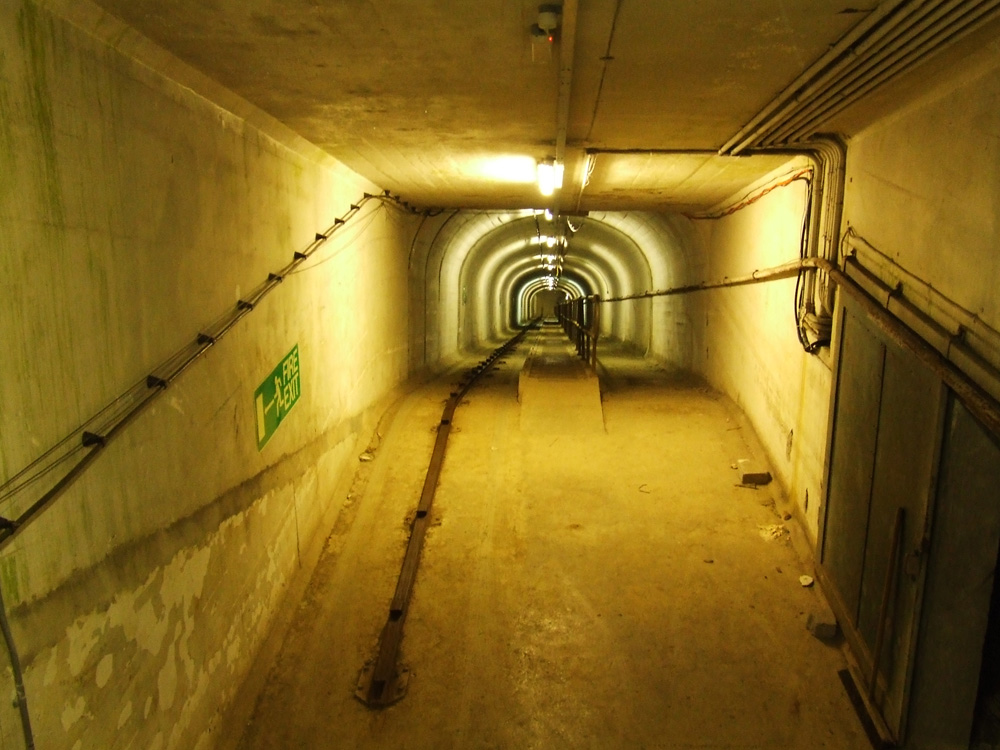
Photo: © Crown Copyright
Nick continued, "underground, initially, it was intended that all of this ammunition would be moved around by a narrow gauge railway system. And in fact, when Tunnel Quarry was nearing completion at the end of 1939, they laid, I think it was about 4 miles of narrow gauge tracks underground. By the early 40s, nearly all of these underground these narrow gauge railways had been replaced by conveyors, which were a much more flexible system, much quicker, quieter, and they could handle a much greater volume."
"So, by 1942, I think they had something like 11 miles of conveyor belts in Tunnel Quarry to move the ammunition around," Nick added.
Tunnel Quarry was not bombed during the war, perhaps due to its secrecy, or perhaps due to the inaccuracy of the German Air force. However, where 500,000 tons of ammunition were stored, there was always the possibility of an accident and strict regulations had to be followed.
One local remembers, "my father was moved to Corsham, to Hudswell, before the war, when they were setting up the ammunition facilities. We all assumed that because of its position, it was reasonably safe because it's so far below solid rock that unless there was an accident underground. Even then, I think they had it so laid out that you would only get individual explosions and not blow the whole roof off of Corsham, as it were."
Nick said, "from the very start, the War Office considered what would happen if there was an explosion underground. They weren't concerned about what was on the surface. In all honesty, they weren't concerned about the towns and villages on the surface. They were concerned about safeguarding their stockpile of ammunition. So these depots, huge areas like Tunnel Quarry, were divided up into these individual storage magazines of four or five acres each surrounded by enormously thick concrete walls. And the plan was that if it was an explosion one of these individual districts or storage magazines the blast would go upwards. It would take the roof off and it would take the ground off but it wouldn't go sideways. So you get surface disruption, but ammunition stored in adjacent magazines hopefully would be undamaged."
There was never an accident at Corsham and Tunnel Quarry was used throughout the Second World war as a supply depot storing thousands of tons in its cavernous storage districts.
Over time Hitler's troops were pushed back by the power of the Allies and the supposed threat from the Luftwaffer never really materialised, as the RAF took control of the skies over Britain. The potential threat from the air that prompted the construction of the underground facilities never materialised, but what happens to a facility such as this when there is no use for it anymore?
Some of the other ammunition sub-depots were sold. One being used by an archiving company for secure storage and the nearby Eastlays being used by a company for the storage of wine.
The tunnels at Corsham were used after the war for a low-key communication centre, which contained its own catering facilities, dormitories and which was decorated with colourful murals designed to boost morale. These murals were left from a time when Spring Quarry was owned by the Ministry of Aircraft production and occupied by the Bristol Aircraft Company. Producing aircraft engines for the Ministry. Since then, the area along with the rest of the huge caverns under Corsham has fallen into a state of abandonment and disrepair.
The underground citadel has returned to the darkness.
Related Content
Daily Horoscopes
You May Also Like
